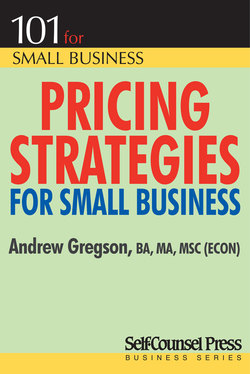Читать книгу Pricing Strategies for Small Business - Andrew Gregson - Страница 42
На сайте Литреса книга снята с продажи.
The Un-Trap of Customer Driven Pricing
ОглавлениеConsider for a moment turning this argument on its head and giving yourself a new vision for your business.
What would happen if you started with the price at which your research shows you can sell Product X? You are certain of the volumes because you have a purchase order in your hands.
Can you make or produce Product X for that price and have a profit after all costs are taken into account? One of history’s greatest industrialists did exactly this.
What Ford put first: The profit lure of mass production obviously has a place in the plans and strategy of business management, but it must always follow hard thinking about the customer. This is one of the most important lessons that we can learn from the contradictory behavior of Henry Ford. In a sense Ford was both the most brilliant and the most senseless marketer in American history. He was senseless because he refused to give the customer anything but a black car. He was brilliant because he fashioned a production system designed to fit market needs. We habitually celebrate him for the wrong reason, his production genius. His real genius was marketing. We think he was able to cut his selling price and therefore sell millions of $500 cars because his invention of the assembly line had reduced the costs. Actually he invented the assembly line because he had concluded that at $500 he could sell millions of cars. Mass production was the result — not the cause — of his low prices.
Ford repeatedly emphasized this point, but generations of production-oriented business managers have refused to hear the lesson he taught. Here is his operating philosophy as he expressed it:
“Our policy is to reduce the price, extend the operations, and improve the article. You will notice that the reduction of price comes first. We have never considered any costs as fixed. Therefore we first reduce the price to the point where we believe more sales will result. Then we go ahead and try to make the prices. We do not bother about the costs. The new price forces the costs down. The usual way is to take the costs and then determine the price; and although that method may be scientific in the narrow sense, it is not scientific in the broad sense, because what earthly use is it to know the cost if it tells you that you cannot manufacture at a price at which the article can be sold? But more to the point is the fact that, although one may calculate what a cost is, and of course all of our costs are carefully calculated, no one knows what a cost ought to be. One of the ways of discovering … is to name a price so low as to force everybody in the place to the highest point of efficiency. The low price makes everybody dig for profits. We make more discoveries concerning manufacturing and selling under this forced method than by any method of leisurely investigation.”[5]
As you examine the methods to analyze your business in later chapters and the appendices, you will discover that starting at the desired end product and working backwards generates some fascinating insights. Ford explained that he started from a price and worked backwards to make the product fulfill the profit objective.
Can you do this in your business? Yes. Customer expectations can be managed at the marketing and sales levels. This drives volumes. Can you buy the ingredients or raw materials at better prices? Can you find a smarter way to make the finished product?
If you are going to have pricing driven by customer expectations, be the market leader. Have more market share than the next competitor. Sell at 7 percent to 10 percent above the rest of the market and commit a large chunk of that extra money to marketing and advertising to keep you on the top of the brand wagon. Then back up your promises with a quality product and great service. It sounds easy, if you say it quickly.
The only sustainable way to increase relative profitability is by achieving a competitive advantage that will enable you to increase sales and margins. In short, the goal of a strategic plan should not be to become bigger than the competition (although that can happen), but to become better. Such positive-sum competition, rather than undermining the profitability of an industry, constantly renews it.
